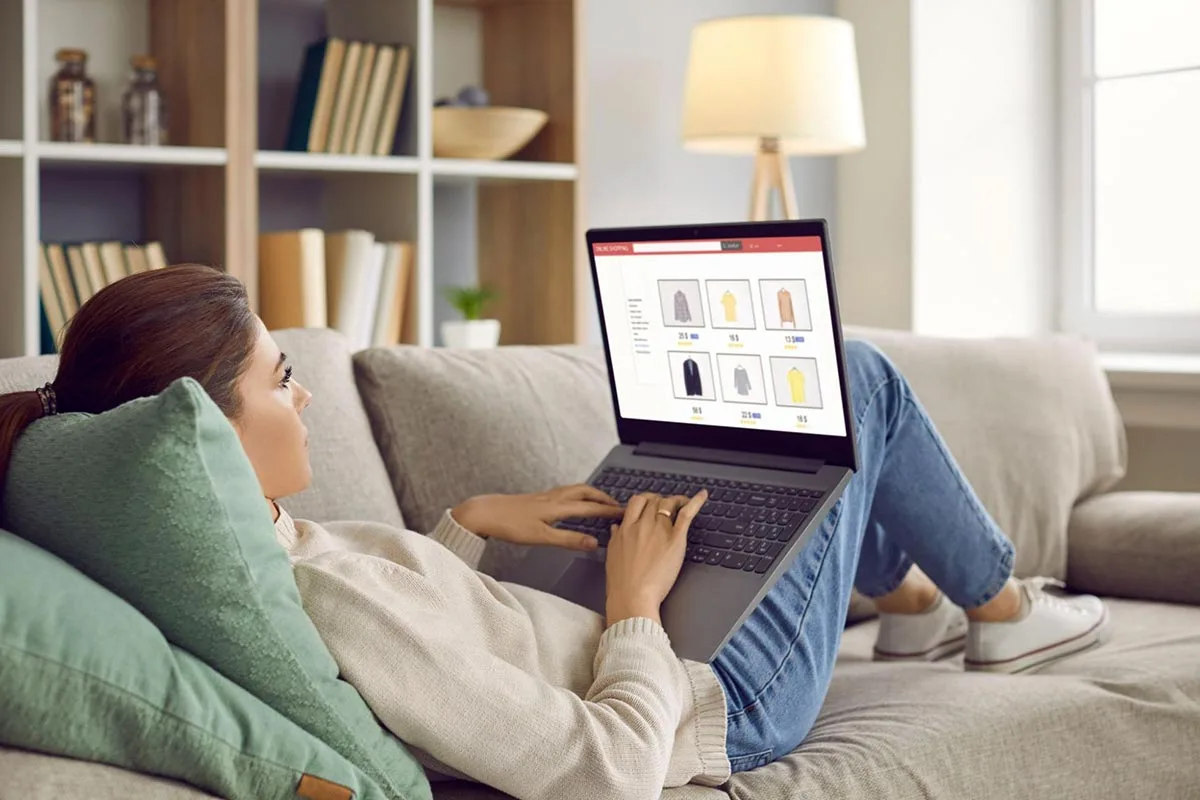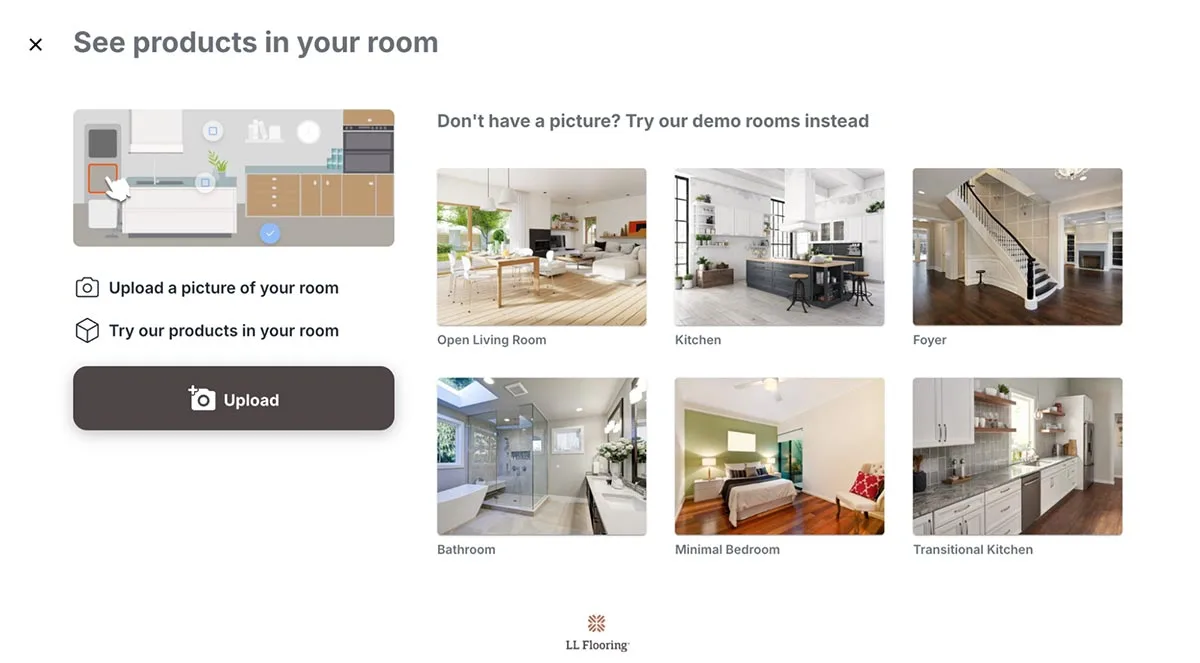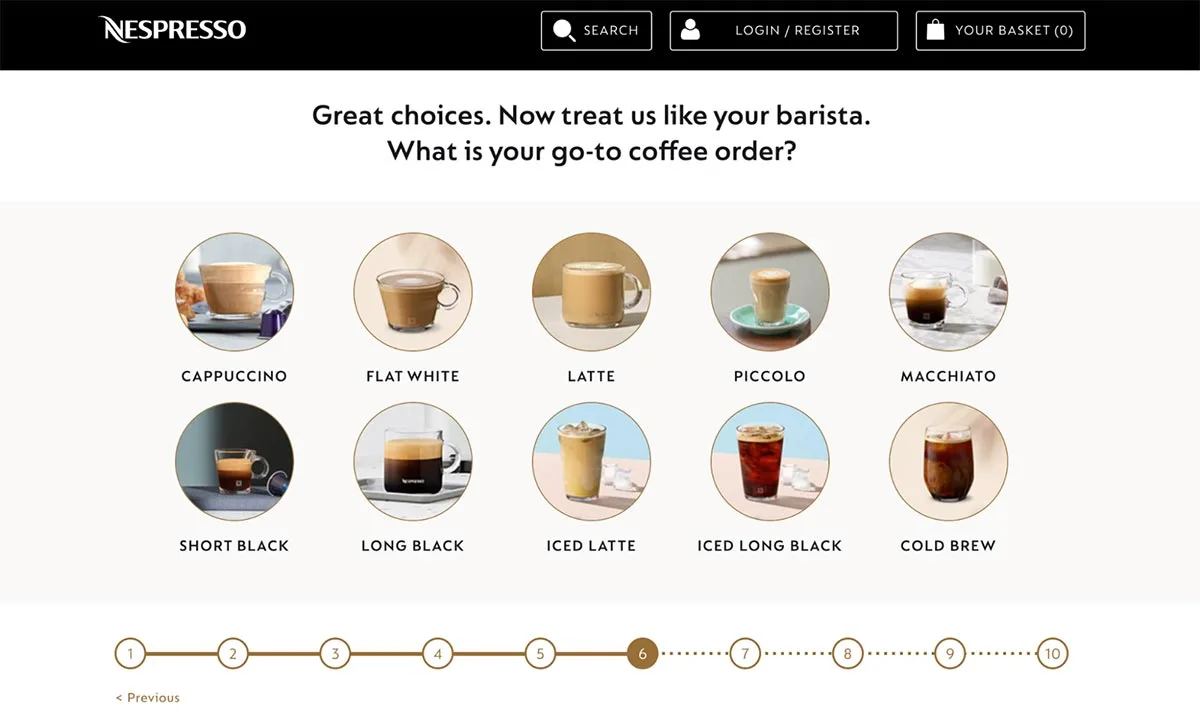8 enterprise marketing solutions for the consideration stage

Your product or service has landed on the radar of your potential customer, but to differentiate it from numerous other competitors, you need to adapt novel enterprise marketing solutions for the consideration stage.
At the consideration stage of the marketing funnel, your prospects are no longer just aware of their challenges; they’re now fully engaged in finding the best fit for their unique requirements. They’re diving deep into research, comparing solutions, and weighing the pros and cons of each option. And this is when you should provide the information and resources they need to make an informed decision confidently—and gently steer them to your company.
Learn more about the goal of the consideration stage and some practical strategies for improving your marketing outcomes.
What is the goal of the consideration stage?

The primary objective in the consideration stage is to nurture leads and guide them toward making a well-informed decision about your product or service.
At this critical juncture, prospects have moved beyond the initial awareness stage—the first stage of the marketing funnel—and are now actively weighing their options to address a specific pain point or opportunity. They’re digging into the nitty-gritty details, comparing features and benefits, and assessing the potential value of each solution.
This is a pivotal moment when prospects ask themselves, “Is this the right choice?” Your mission is to provide the evidence and assurance they need to answer that question with a resounding “yes.”
To achieve this, your messaging must be meticulously designed to address these foundational elements of consideration stage marketing:
- Key pain points and challenges: Clearly identify and describe the problems your target audience faces that your product or service solves.
- Differentiation and unique value proposition (UVP): Emphasize what makes your offering stand out from competitors, and communicate the UVP that makes it the best solution for the prospect’s needs.
- Comprehensive feature and benefit explanations: Provide detailed yet easy-to-understand explanations of the key features and corresponding benefits of your product or service, demonstrating how they directly address the audience’s challenges or needs.
- Social proof and credibility builders: Include customer testimonials, case studies, industry awards, or other forms of social proof that establish your credibility. Leverage expert opinions and thought leadership content to validate your solution further.
By focusing on these foundational elements, your marketing efforts can effectively capture the attention of prospects, address their concerns, and position your offering as the ideal choice to meet their needs. With that in mind, let’s look at eight practical enterprise marketing solutions for the consideration stage to consider including in your marketing campaigns.
Enterprise marketing solutions for the consideration stage: 8 ways to convert prospects
In the consideration stage, prospects dig deep into their research and evaluate the best solutions available. Through tailored strategies that directly address their needs and concerns, you can guide them toward seeing your solution as the best choice for their requirements. The following eight consideration stage marketing strategies can help you achieve that.
1. Create a concierge-like service for attentive, personalized support
For prospects considering high-ticket or complex purchases, a product concierge-like service with personalized support can lead them to purchase. By offering a dedicated, knowledgeable resource to answer questions, provide recommendations, and offer guidance, you can create a sense of confidence and trust that sets your brand apart from competitors.
Nordstrom, a leading fashion retailer, offers a unique product concierge-like service through its free style help and Style Board. These services provide high-touch, personalized customer support throughout the buyer’s journey.
With Style Board, prospective customers can connect with a personal stylist who will create a customized digital mood board with product recommendations tailored to the customer’s individual style, size, and budget preferences. Customers can review the board and provide feedback, allowing the stylist to refine their recommendations until the customer is completely satisfied. Additionally, prospects can also book a free appointment online or offline with a stylist to get guidance on choosing the right pieces of apparel based on their preferences.
By providing such personal, hands-on support, enterprises can make the prospects feel valued and build stronger relationships. Also, by giving free expert guidance and support throughout the customer journey, enterprises can help prospects make better-informed purchase decisions, which reduces the risk of returns or dissatisfaction.
To create a similar concierge-like service for your enterprise:
- Start by identifying the key areas where customers need additional support or guidance. This could include product selection, sizing, installation, or troubleshooting.
- Train a team of knowledgeable and friendly representatives to provide high-touch, personalized customer support.
- Make the service easy to access and use, with clear instructions on connecting with a representative.
- Consider leveraging technology, such as video conferencing or live chat, to provide remote support and guidance.
- Use this service as the focal point of your promotions to demonstrate your hands-on approach.
By creating a concierge-like service for your enterprise, you can differentiate from your competitors, build authentic connections, and increase lead conversion rates.
2. Develop a “try before you buy” product sampling program
Prospects in the consideration stage are often in the process of choosing and weighing their options between multiple brands. So the ability to physically experience a product—at no risk and no cost—before making a purchase can be a powerful motivator.
To build confidence and credibility with prospects, develop a “try before you buy” program, allowing them to test your products without any upfront cost or commitment.
Warby Parker, the online eyewear retailer, pioneered the Home Try-On program, which has become a cornerstone of their lead generation strategy. The program allows prospects to select up to five frames from Warby Parker’s website, which are then shipped to their home for free.
Prospects have five days to try on the frames, get feedback from friends and family, decide which ones they like, and send them back in the pre-addressed return box. Based on the customer’s selection, Warby Parker will then send out the glasses with the required prescription.
This “try before you buy” program removes the barriers to trying on frames in person and creates a no-risk, high-reward experience. In addition, it allows Warby Parker to build trust and confidence with prospects.
You can also adopt a similar “try before you buy” program to engage prospects in the lead nurturing process. For instance, a skincare brand could offer a free trial kit with sample-size products, while a home goods retailer could provide a free in-home consultation and product demonstration.
For enterprises in service-based industries, you could offer:
- A seven-day free trial for a gym membership or a virtual yoga class
- A complimentary health test for fitness and wellness services
- A free consultation to build trust
- A 14-day free trial of a SaaS platform to let users explore features
- Free access to the first module of an online course to entice students
- A complimentary first session for personal training or nutrition coaching to demonstrate value
- A free CAD design or remodeling consultation for builders
- Free trial sessions for online tutoring or language learning services
- A complimentary audit or assessment for financial planning or marketing services
- A free sample class for educational workshops or skill-based training programs
- A no-cost trial period for premium subscription services
- A complimentary home inspection for new home buyers
- Free paint color samples to help prospects decide better
- Free electrical safety inspection for energy-saving solutions
- Free plumbing inspection to identify potential issues or a complimentary water efficiency assessment
By giving prospects hands-on experience with your products or services, you can build credibility and earn their trust, increasing the likelihood of conversions.
3. Collaborate with micro-influencers for authentic, niche-specific content
While influencer marketing isn’t a new concept, the rise of micro-influencers presents a unique opportunity for enterprises to engage prospects in the consideration stage. Micro-influencers are social media personalities with smaller but highly engaged and niche-specific followings. By partnering with micro-influencers who align with your brand’s values and target audience, you can create authentic, relatable content that resonates with prospects on a deeper level.
Credit Karma, a credit monitoring and financial management platform has partnered with micro-influencers to provide credit education and promote financial literacy. Many micro-influencers have created Instagram posts sharing their credit journey and how Credit Karma helped them improve their credit scores and achieve their financial goals.
View this post on Instagram
By featuring real, relatable people and their genuine experiences with the brand, Credit Karma creates a sense of authenticity and trust that resonates with prospects considering their products. This micro-influencer-driven content strategy has helped Credit Karma build a loyal, engaged community of customers who feel personally connected to the brand.
Similarly, you can leverage micro-influencer partnerships to create authentic, niche-specific content that engages prospects and steers them toward a purchase decision:
- Use social media listening tools like Sprout Social or Brand24 to monitor relevant hashtags, topics, and conversations in your niche communities to actively find engaged micro-influencers in these spaces
- Choose micro-influencers with a highly engaged following, authentic content, and values that align with your brand
- Collaborate with them to develop honest, engaging content that showcases your products or services
- Monitor the performance of your campaigns and adjust your strategy based on the feedback and engagement metrics you receive
4. Create an immersive, interactive, virtual demo experience
To build confidence in your prospects’ purchase decisions, you must thoroughly explore your product’s features and benefits in the consideration stage of the sales funnel. To facilitate this exploration, create an immersive, interactive demo experience that allows prospects to engage with your product in a self-guided manner from the comfort of their homes.
Sephora’s Virtual Artist is a great example of how such virtual demos have revolutionized the way customers try on makeup. This immersive, interactive product demo experience allows customers to experiment with different looks and products without entering a store.
The Virtual Artist scans a customer’s face using augmented reality technology and lets them virtually apply makeup products in real time. Customers can try different shades of lipstick, eyeshadow, and foundation and experiment with various looks curated by Sephora experts. The tool also provides personalized recommendations based on the customer’s skin tone and preferences, making it easier to find products that suit their needs.
This concept can be adapted to other industries as well. For example, a furniture company could use 3-D renderings to let customers explore how products would look in their living rooms. A software company could create a sandbox environment where users can test the functionality of their tools before purchasing.
An interior design firm could use virtual reality to let clients walk through proposed renovations in a fully immersive experience. Landscaping, flooring, or deck and patio companies could provide an online interactive design tool that lets customers visualize updates to their homes, similar to LL Flooring’s Visualizer.

An immersive, interactive demo experience allows customers to engage with products or services in a fun and risk-free way, increasing their confidence in purchasing.
Unlike “try before you buy” campaigns—where prospects get to physically experience the actual product for a limited time—immersive demos provide an online virtual experience. This method is ideal for industries like software, interior design, high-end retail, or home services, where customers want to explore or customize products and services thoroughly before buying.
By letting customers virtually try-on or experience products and services, you can reduce the barrier to purchase and make it more likely that customers will find the right option for them. Additionally, the personalized recommendations help build customer trust and loyalty, as they feel you understand their unique needs and preferences.
5. Build trust and differentiate your brand with a transparent pricing strategy
Once the target customers move past the awareness stage into the consideration stage, price often plays a critical factor in their decision-making process.
And there are various ways to differentiate your brand and build trust with prospects, regardless of your price structure:
- Price match guarantee: If you can offer competitive pricing, consider a “price match guarantee” to assure prospects that they’re getting the best deal. Best Buy’s “Price Match Guarantee” promises to match lower prices from competitors, ensuring customers get the best value.
- Justify premium pricing: For luxury or premium brands, justify higher prices by highlighting the unique features, craftsmanship, or expertise that set your products apart. For example, Cartier, the popular luxury jewelry brand, emphasizes the quality materials and artisanship that go into each piece, justifying their premium positioning. Cartier also stands out for being transparent in pricing and providing detailed information on materials and sourcing practices.
- Volume discounts or bundles: Offer volume-based discounts or product bundles to provide value to customers who purchase multiple items or larger quantities. This can make your prices more attractive while still maintaining profitability.
- Loyalty programs and exclusive discounts: Reward loyal customers with exclusive discounts, promotions, or early access to sales. This not only provides value but also encourages long-term relationships with your brand.
- Flexible payment options: Provide flexible payment plans or financing options to make your products more accessible to a wider range of customers. This can be especially effective for high-ticket items or services.
No matter your approach, highlight your offers or unique features and discounts prominently in marketing campaigns, advertisements, and on your website. Clearly communicate the value proposition of your pricing model or discounts to help prospects understand the benefits and make an informed decision.
Additionally, you can retarget your interested prospects through any of the different solutions offered by Yelp Ads. For example, you can use Yelp Audiences’ off-platform targeting capabilities to showcase your price-related offers and promotions to high-intent users who have demonstrated an interest in your products. You can retarget them anywhere online based on their Yelp search activity, page visits, and app engagement.
In fact, this is one of the top reasons Bulwark Exterminating has achieved a 20% increase in its leads and sales. Thomas Ballantyne, director of marketing at Bulwark, attributed much of their success to Yelp Audiences, “I love Yelp Audiences because it gets me the right clientele. They’re like digital billboards in several locations. I can now get in front of Yelp’s audience, even when they’re not on Yelp.”
Similarly, you can highlight your unique price offerings through Yelp Audiences and show them the tangible benefits of your offerings.
You can also go one step further and show how you arrive at your pricing and educate prospects on the value they’re receiving. This can help build trust and justify your pricing in the minds of potential customers.
For example, you can:
- Provide detailed breakdowns of what goes into the cost of your products or services, such as materials, labor, overhead, etc.
- Explain your pricing methodology and how it aligns with industry standards or benchmarks.
- Offer pricing calculators or tools that allow prospects to see exactly what they’re paying for and customize their options.
- Highlight the long-term value, quality, or cost-savings your offerings provide compared to cheaper alternatives.
- Highlight the exclusivity of premium products or services along with the intricate detail that goes behind them.
By being transparent and educational about your pricing, you can help prospects better understand the reasoning behind your prices and the value they’re receiving in return. This level of transparency can go a long way in building trust and credibility, even if your prices are not the lowest in the market.
6. Highlight your success stories to inspire confidence
Forty-six percent of consumers trust online reviews as much as they trust personal recommendations from friends or family. This means your reviews can be the make-or-break factor in a prospect’s decision-making process.
So actively seek out and amplify user-generated content that reinforces your brand narrative, such as customer testimonials, social media posts showcasing your products in action, or customer reviews in the form of videos. Integrate these stories into your digital marketing campaigns, website, and social media channels to create a cohesive and immersive brand experience that’s authentic, interactive, and of the best quality.
Duluth Trading & Co. exhibits a knack for promoting its products through user-generated content and real-life stories, positioning itself as the essential gear for tackling tough jobs and adventures. The recent #ShowUsYourBibs campaign on Instagram is an excellent example of that.
View this post on Instagram
This campaign encouraged customers to share photos of themselves wearing Duluth’s iconic bib overalls in various work and adventure settings. This generated a wealth of authentic content showcasing the product’s durability and building a strong sense of community among customers.
By showcasing real-life examples of how your products or services have positively impacted customers, you demonstrate your value, highlighting your expertise and credibility in solving customers’ challenges.
For B2B marketing, creating a separate section on your website for case studies or success stories could help build trust in your brand. DHL, a top logistics and supply chain management enterprise, has leveraged social proof and customer success stories to solidify itself as a trusted partner. Through its “Success Stories” page, DHL highlights how its innovative solutions have helped businesses across various sectors streamline their supply chains, optimize logistical operations, and deliver exceptional customer experiences.
7. Create a gamified, interactive evaluation tool to guide product selection
Prospects are often overwhelmed with product options and may struggle to determine which one best fits their needs. To help them navigate this, you can use a gamified, interactive tool that guides them to the perfect product based on their unique preferences and requirements.
Nespresso, the premium coffee brand, developed an engaging, interactive quiz called “Coffee Profiler” to help prospects discover their ideal coffee blend. The quiz asked a series of playful, personality-driven questions. As prospects progressed through the quiz, the algorithm narrowed their coffee preferences, ultimately revealing their perfect match from Nespresso’s range of blends.

The quiz results page features a detailed description of the selected blend and product recommendations. By creating a fun, interactive experience that mimics chatting with a knowledgeable barista, Nespresso guides prospects to a tailored product selection with straightforward calls to action while helping customers feel more confident in their choices.
Such interactive tools create a sense of discovery and exploration, encouraging customers to try new products and step outside their comfort zone. The gamification elements, such as the visual animations and progress bars, create a sense of achievement and reward, making the experience more enjoyable and memorable.
This strategy is easy to apply across most product- and service-based enterprises. For example, Discover offers a quiz that asks a potential customer what they need help doing (i.e., managing spending, saving, or retirement funding). The following questions are then customized based on that answer to further explore the person’s needs.. Based on the quiz answers, Discover then directs the prospect to one of its account types, reiterating how well it fits in with their requirements.
Similarly, a travel agency could use a quiz to recommend personalized vacation packages tailored to each customer’s preferences, which may help increase the number of bookings. Or a fitness center could match users with custom-tailored workout programs based on their fitness goals, encouraging sign-ups for gym memberships or personal training sessions.
By leveraging interactive and personalized tools, businesses can engage customers more effectively, making their purchasing journey both informative and enjoyable.
8. Combine strategies and diverse content to reach all prospects

Everyone has their own preferred way of consuming information. Some prefer an interactive quiz to match them with products. Others may want to read detailed feature lists on their own, and another segment of people may like comparing options side-by-side in a table.
Your marketing approach needs to accommodate such diverse buyer personas so that every potential customer finds the information they need (in their preferred format) to confidently move forward in their buying journey. While there are numerous marketing strategies you can implement, deciding the right content formats to deliver through is equally crucial.
In addition to marketing solutions already mentioned, here are different types of content and information formats you can also use to help your leads move from the consideration to the decision stage:
- Whitepapers and industry reports: For personas that value comprehensive, data-driven insights, whitepapers and in-depth guides are invaluable. These long-form assets provide a deep dive into your solution’s features, benefits, and industry-specific applications, helping to establish your authority and expertise.
- Long-form blogs: Long-form blogs can be powerful for personas seeking in-depth analysis, thought leadership, and industry insights. These comprehensive articles allow you to explore complex topics, share expert perspectives, and demonstrate your knowledge and expertise. These can be a great way to demonstrate how your product or service solves a challenge or pain point.
- Comparison charts and matrices: For personas focused on feature-by-feature analysis and side-by-side comparison guides, visually appealing comparison charts and matrices can effectively highlight your solution’s unique advantages and differentiate it from competitors.
- Guided dynamic tools: Certain buyer personas appreciate hands-on experiences and the ability to explore and quantify potential outcomes. Guided dynamic tools, such as ROI calculators or product configurators, can engage these personas and provide personalized insights into the value your solution can deliver.
- Virtual events and in-person panel discussions: For personas that value human interaction or the opportunity to ask questions, virtual events—like podcasts and webinars—and in-person discussions can be highly effective inbound marketing strategies. These formats allow you to address specific concerns, provide detailed walkthroughs, and showcase your solution’s capabilities in real time.
- Product/service video series: Some prospects prefer to see products and services in action rather than just reading about them. Creating comprehensive video series—like unboxing videos, setup videos, feature demos, product comparison videos, and use case walkthroughs—can effectively showcase your offerings and educate these visual learners.
Choose the best content and informational formats to deliver your messaging based on your target buyer personas. Offer multiple opportunities for qualified leads to discover, understand, and experience your products and services during the consideration stage.
Make your brand the clear choice
Prospects at the consideration stage require more than just product or service information—they need context, comparisons, and concrete examples of how your solution excels. Your goal is to provide clarity and support through detailed, value-driven messaging and marketing solutions that address their specific concerns and help simplify their decision-making process.
Make sure to demonstrate how you can solve potential customers’ unique challenges through a mix of relevant content, demos, success stories, gamified experiences, and more. It’s about positioning your brand as the answer they’ve been looking for.
And once you have their undivided attention, leverage these actionable marketing strategies to convert prospects into paying customers.